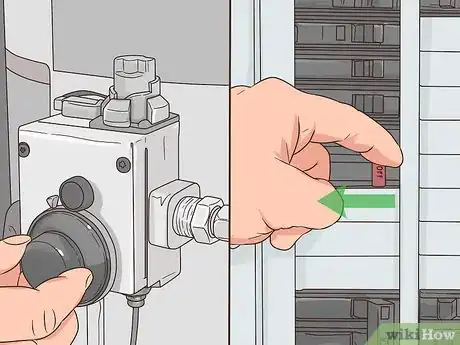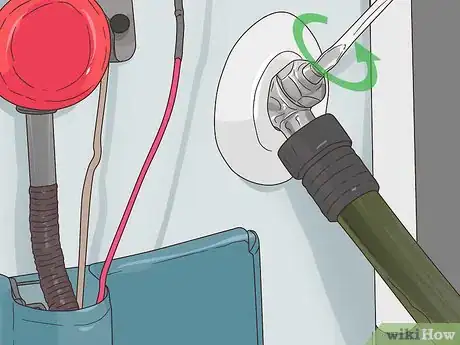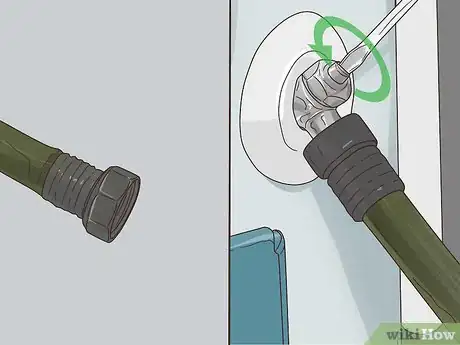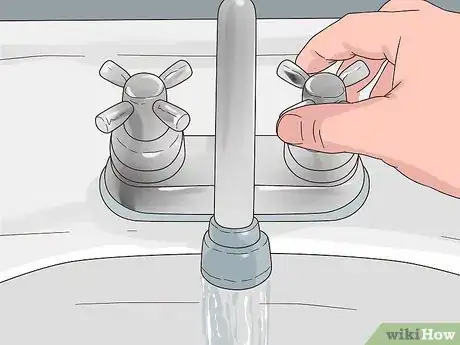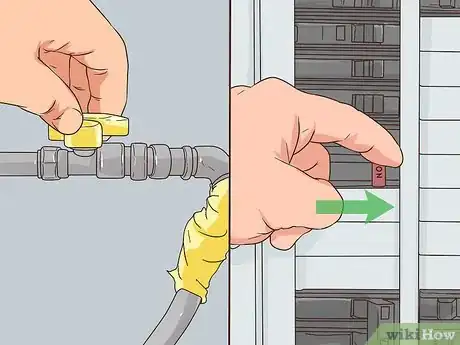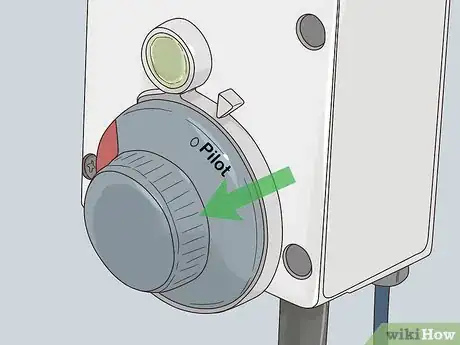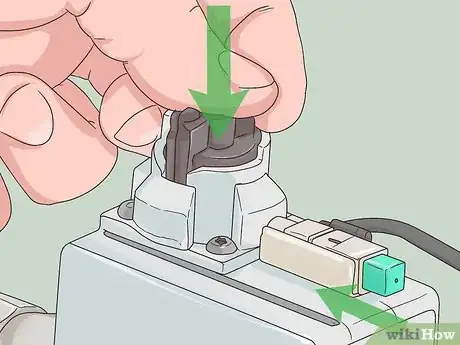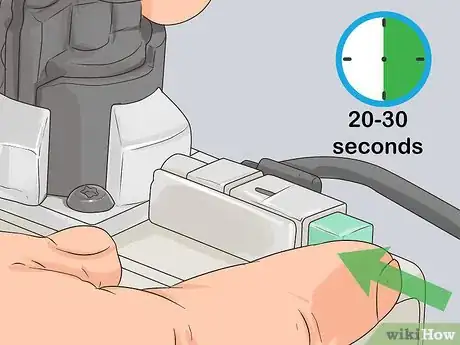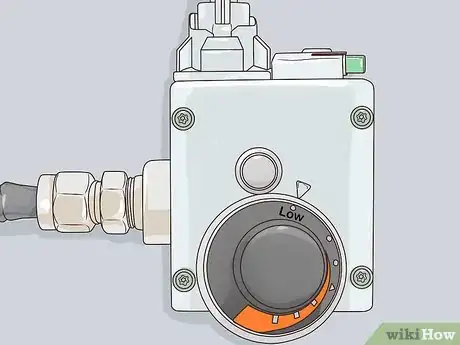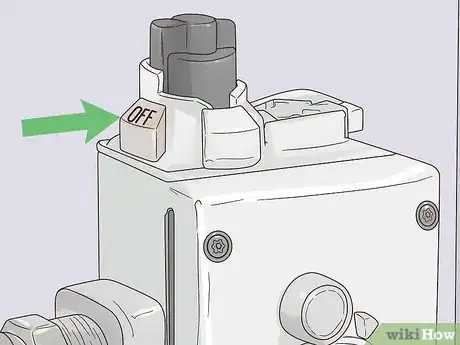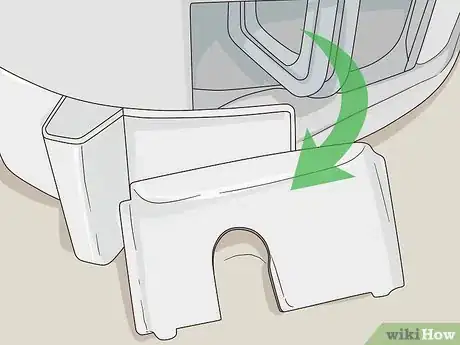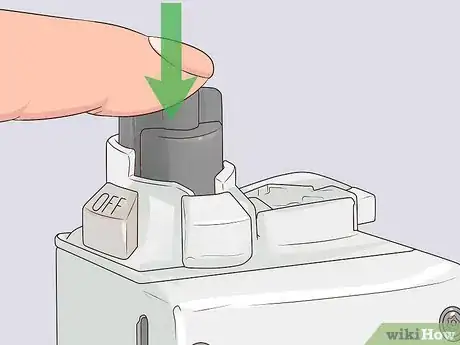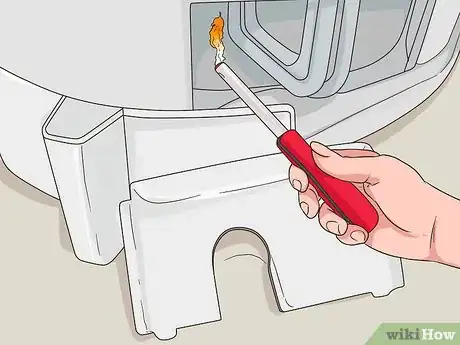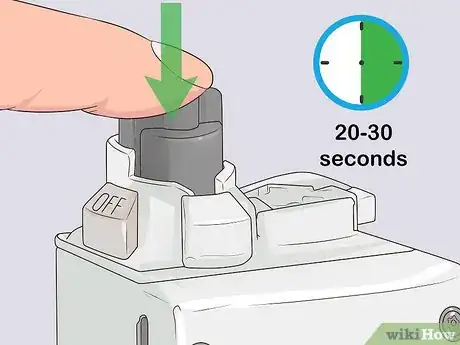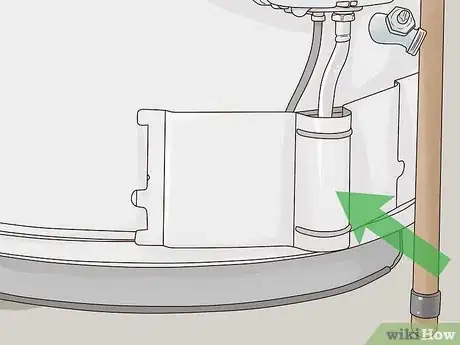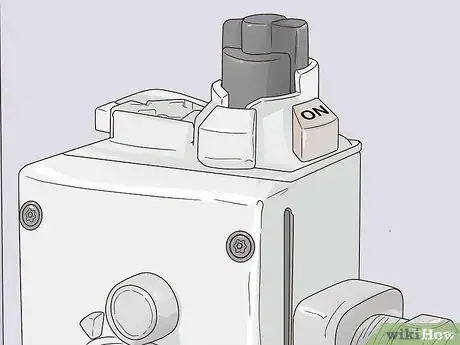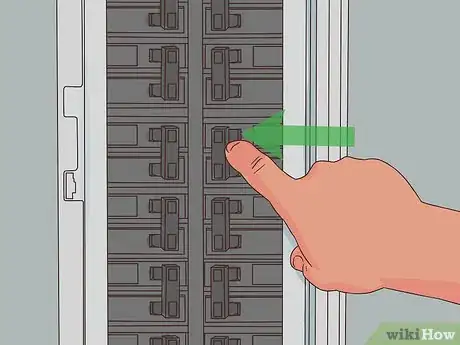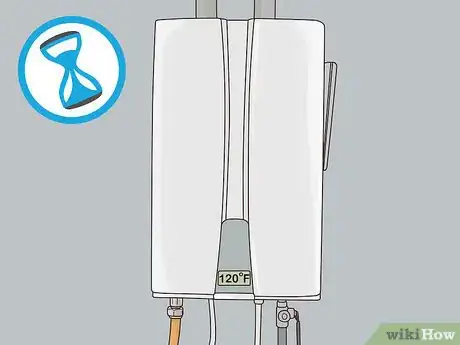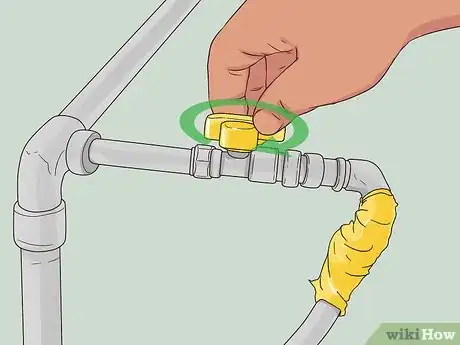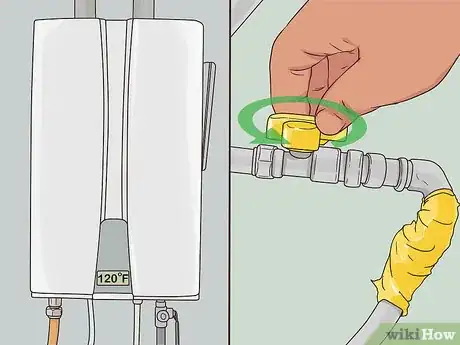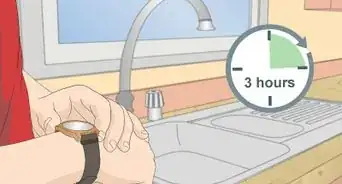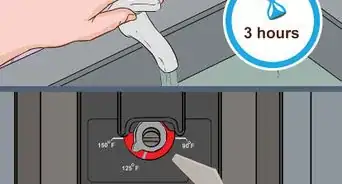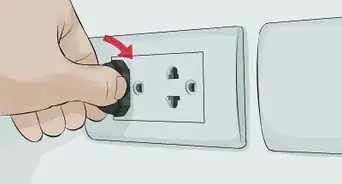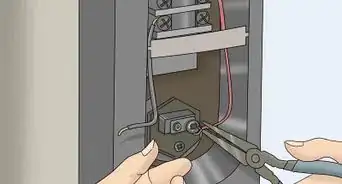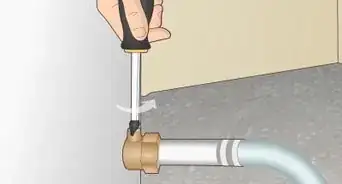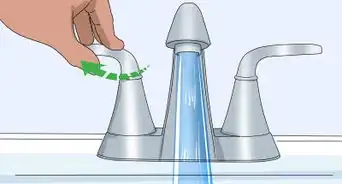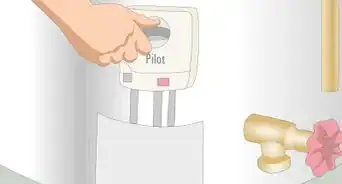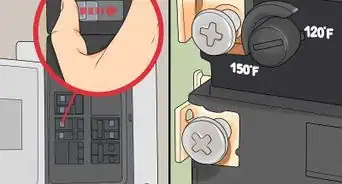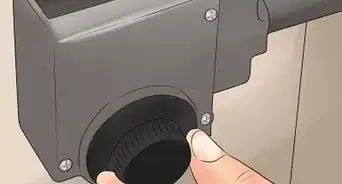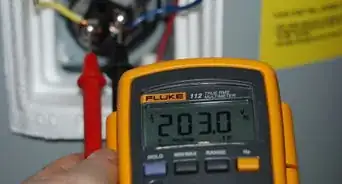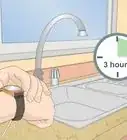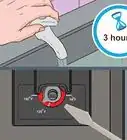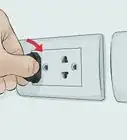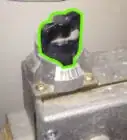This article was co-authored by Dave Jones. Dave Jones is a Professional Plumber and the Midwest Regional Vice President at Roto-Rooter Plumbing & Water Cleanup. In 1992, Jones joined Roto-Rooter as a drain service technician at the age of 18. Since then, he has risen through the ranks into positions of increasing authority. Dave served as general manager of Roto-Rooter’s Charlotte, North Carolina, and Atlanta, Georgia branches before being promoted to Contractor Area Manager and later to Regional Vice President. Dave holds Master Plumber Licenses in Pennsylvania, North Carolina, and Georgia.
This article has been viewed 201,608 times.
Whether you have an electric water heater or a gas water heater, you can turn it on without having to call a professional to help you. An electric water heater requires finding the circuit breaker and turning it on, while a gas water heater needs the pilot light to be lit. One of the most important steps is making sure your water heater is entirely full of water before starting it up.
Steps
Making Sure the Water Tank is Full
-
1Shut off the water supply and gas valve or circuit breaker. Turn the gas valve to "Off," or make sure the breaker switch for the water heater is off at the circuit breaker. To turn the water supply off, twist the valve for the cold water supply line that enters the tank (usually from above).[1]
- The breaker switch for your water heater should be labeled, but if it isn't, go ahead and turn off the main power.
-
2Drain and flush the tank to clean it out. To drain your water tank, attach a hose to the bottom of the tank where the spigot is. Choose a hose that's long enough to stretch to a nearby floor drain or utility sink, or all the way outside to the yard. Then open the drain valve on the water tank to start the draining process. By opening a hot water tap close to the tank, you'll help it drain faster while also being able to check on its progress. Open the cold water supply valve again to flush out any extra residue or minerals from the tank.[2]
- Let the cold water flush through the drain valve for 5-10 minutes.
- You can skip the flush if it's a newly-installed tank. Don't attach the hose or open the drain valve, and use the nearby hot water tap to know when the tank is full -- a steady stream of water without sputtering is the sign.
Advertisement -
3Shut the drain valve while keeping the water supply open. Once your tank has been flushed out and clean water is coming out of the hose, close the drain valve and take off the hose. Your water tank should now begin to fill back up. Keep the tap open on the nearby faucet so that air can escape while the tank fills up.[3]
-
4Keep checking the nearby open hot water tap. Your hot water tap is how you'll know when your tank has filled up. Once you see and hear a nice, steady stream of water come through the faucet, your water heater is full. If you hear sputtering, this means air is still being forced out of the tank. You can close the tap once it has a steady stream.[4]
-
5Turn on the gas supply or circuit breaker. Now that the tank is full, you're ready to turn on the water heater. If you're dealing with gas, switch the gas valve to the "On" position when you're ready to ignite the pilot light. For electric water heaters, turn the circuit breaker back on.[5]
Starting a Modern Gas Water Heater
-
1Set the temperature and On/Off controls to the right setting. Before starting the water heater, turn the temperature control to the lowest setting. The On/Off control will need to be switched to the "Pilot" setting.[6]
- If you smell gas or a rotten egg odor, don't go any further until calling your gas company — you could have a gas leak.
-
2Press the pilot igniter button down while starting a spark. While you're holding down the pilot igniter button, press the spark generator. This should create a spark that you can see through the little glass window, showing you that the pilot light is lit.[7]
-
3Keep pressing the pilot igniter button for 20-30 seconds. After you see the spark, don't let go of the pilot igniter button yet. Keep pressing it for 20-30 seconds so that it's able to get hot enough before being released.[8]
- You may have to press the spark generator down every 10 seconds until it properly lights if it isn't lit after 30 seconds.
-
4Turn the control to On and the temperature to the desired setting. Switch the On/Off control to "On." Then turn the temperature setting to your desired temperature. Most people set theirs to 120 °F (49 °C). At this point, you should be able to see flames through the small glass window.[9]
- It is not recommended to set the thermostat above 120 °F (49 °C) due to the risk of scalding.
Igniting an Older Gas Water Heater
-
1Turn the temperature down and the On/Off control to the "Pilot" setting. Before turning the gas on, turn the temperature to the lowest setting. Switch the regulator valve to “Off” and wait 10 minutes. After the 10 minutes have passed, you can switch the valve to “Pilot."[10]
- Call your gas company if you smell a rotten eggs odor. This could be a sign that you have a gas leak.
-
2Remove access panels, if necessary. Your water heater may have inner and outer access panels that need to be removed. If this is the case, take out the access panels in order to get to the pilot light. The access panels usually just slide right out.[11]
-
3Press and hold down the water heater pilot button. Keep the pilot button pressed down so that you'll be able to start up the water heater. If your model doesn't have a specific pilot button, press and hold the On/Off control.[12]
-
4Light the pilot using a long neck lighter. Find the small silver tube that is connected to the gas control valve — this is the pilot supply tube. Follow the silver tube to the end and use a long neck lighter to light the pilot.[13]
-
5Keep the pilot button pressed for 20-30 seconds before releasing it. Once you've lit the pilot, continue to press down on the button for 20-30 seconds. After the time has elapsed, you can slowly release it and the pilot should continue to stay lit.[14]
- If your pilot light goes out, light the pilot again and hold the pilot button down longer than the previous time.
-
6Put the access panels back on, if necessary. If your water heater has access panels, it's time to put them back in place. Forgetting to do this could cause serious injury if the flames suddenly flow out of the opening due to gas build-up.[15]
-
7Turn the On/Off and temperature control to the right settings. Switch the On/Off control to the "On" position, and put the temperature control to the setting you wish — 120 °F (49 °C) is recommended. After you've set the controls, you should hear your water heater firing up.[16]
Turning On Electric or Tankless Water Heaters
-
1Turn on the breaker for the hot water tank after it's full of water. For an electric water heater, you’ll need to locate the circuit breaker that controls the heater and turn it on. If the breaker isn’t labeled, look for a double-pole breaker that has the same amp rating as the heater. Simply switch on the breaker to turn on the electric water heater.[17]
- The amp rating should be labeled on the water tank.
-
2Wait several hours for the water tank to heat up. It will take your water heater several hours to completely heat up, so check it periodically by turning on a faucet to make sure it’s getting warm. The recommended temperature is 120 °F (49 °C).[18]
-
3Turn off the gas before switching on your tankless water heater. It's important to make sure the gas is turned off before starting up your tankless water heater. Tankless water heaters will need to be turned on by flipping the corresponding breaker, or by flipping on a switch.[19]
-
4Confirm the temperature and turn on the gas for the tankless water heater. Once you've turned on the power, you can adjust the temperature using the temperature controller, which is often digital. Turn the gas supply on, and that's it![20]
- Tankless water heaters operate on-demand, so it will only start heating water once you need to use it.
- Since these water heaters are tankless, you don't need to fill them up with water.
Community Q&A
-
QuestionHow do you light an electric water heater?
 Drew Hawkins1Community AnswerElectric water heater do not need to be lit. Locate the circuit breaker that controls the heater and turn it on. Wait a few hours so the water tank can heat up. Turn on a faucet periodically to make sure it's getting warm. When the water reaches 120 °F (49 °C), then the tank has fully heated.
Drew Hawkins1Community AnswerElectric water heater do not need to be lit. Locate the circuit breaker that controls the heater and turn it on. Wait a few hours so the water tank can heat up. Turn on a faucet periodically to make sure it's getting warm. When the water reaches 120 °F (49 °C), then the tank has fully heated. -
QuestionHow do I reset my hot water heater?
 Drew Hawkins1Community AnswerLook for a red button on the side of the water heater that says "Reset." Some water heaters have a reset button that is hidden beneath the thermostat. When you locate it, press the button firmly. It may make a clicking sound when it resets.
Drew Hawkins1Community AnswerLook for a red button on the side of the water heater that says "Reset." Some water heaters have a reset button that is hidden beneath the thermostat. When you locate it, press the button firmly. It may make a clicking sound when it resets. -
QuestionHow long do you have to wait for hot water to come back?
 Drew Hawkins1Community AnswerGas water heaters can heat up a tank of hot water in about 30 minutes. Electric water heaters can take a couple of hours to heat the water in its tank. Once the water tank has been heated, you'll have hot water again.
Drew Hawkins1Community AnswerGas water heaters can heat up a tank of hot water in about 30 minutes. Electric water heaters can take a couple of hours to heat the water in its tank. Once the water tank has been heated, you'll have hot water again.
Warnings
- If there are drips coming out of the discharge pipe, it may mean the pressure is too high. Turn it down so that it's below 80 psi.⧼thumbs_response⧽
- For a gas water heater, always check to make sure you don't smell a gas leak — or rotten eggs odor — before lighting the pilot light.⧼thumbs_response⧽
References
- ↑ http://homeguides.sfgate.com/drain-flush-refill-gas-water-heater-83269.html
- ↑ http://homeguides.sfgate.com/drain-flush-refill-gas-water-heater-83269.html
- ↑ http://homeguides.sfgate.com/drain-flush-refill-gas-water-heater-83269.html
- ↑ http://homeguides.sfgate.com/drain-flush-refill-gas-water-heater-83269.html
- ↑ http://homeguides.sfgate.com/drain-flush-refill-gas-water-heater-83269.html
- ↑ http://www.water-heater-repair-guide.com/hotwaterheaterpilotlight.html
- ↑ http://www.water-heater-repair-guide.com/hotwaterheaterpilotlight.html
- ↑ http://www.water-heater-repair-guide.com/hotwaterheaterpilotlight.html
- ↑ http://www.water-heater-repair-guide.com/hotwaterheaterpilotlight.html
- ↑ http://www.water-heater-repair-guide.com/waterheaterpilotlight.html
- ↑ http://www.water-heater-repair-guide.com/waterheaterpilotlight.html
- ↑ http://www.water-heater-repair-guide.com/waterheaterpilotlight.html
- ↑ http://www.water-heater-repair-guide.com/waterheaterpilotlight.html
- ↑ http://www.water-heater-repair-guide.com/waterheaterpilotlight.html
- ↑ http://www.water-heater-repair-guide.com/waterheaterpilotlight.html
- ↑ http://www.water-heater-repair-guide.com/waterheaterpilotlight.html
- ↑ http://www.home-repair-central.com/electric-hot-water-heater-startup.html
- ↑ http://www.home-repair-central.com/electric-hot-water-heater-startup.html
- ↑ https://www.homedepot.com/catalog/pdfImages/1a/1a7b364a-791e-42c0-92cf-19f94e284f41.pdf
- ↑ https://www.homedepot.com/catalog/pdfImages/1a/1a7b364a-791e-42c0-92cf-19f94e284f41.pdf
About This Article
Before you turn on your gas water heater, make sure that the water tank is full. After checking this, turn the knob on your water heater to the "pilot" setting and, if you have one, press the spark igniter button. If you don't have one, use a long-handled lighter to light your pilot. Once your pilot is lit, turn the knob to the "on" position and adjust the temperature to your desired setting. Most people set their water heaters at 120 °F. To learn how to refill your water tank and turn on an electric water heater, keep reading!
